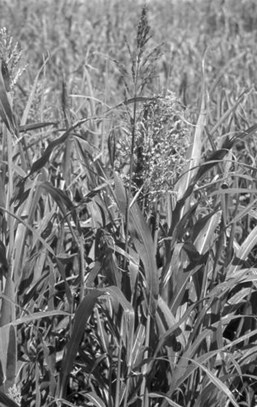Sorghum and Sudan Grass Toxicosis
Basic Information 
Epidemiology
Geography and Seasonality
• Sorghums are warm-season, coarse, annual grasses ranging in height from 2 to 6 feet. Introduced from Africa, sorghums have become well established in North America, with some being useful grain and forage species (Sorghum bicolor); others such as Johnson grass (Sorghum halapense) are noxious weeds.
• Sudan grass, formerly Sorghum sudanense, is now a species of S. bicolor (Figure 1).
• Some sorghum hybrids have been selected for their low cyanogenic glycoside content.
Clinical Presentation
Disease Forms/Subtypes
Sorghum poisoning in horses has a slow onset (1–6 months) and is a chronic disease.
Physical Exam Findings
• Weakness and ataxia of the hindquarters. In severe cases, the horse collapses when backed.
• Urinary incontinence may lead to urine scalding of the perineum and hind legs. Hematuria and a thickened, atonic urinary bladder can be palpated rectally.
• Tail flaccidity, dilatation of the rectum, and abnormal accumulation of feces occur because of an atonic rectum.
• Some foals may be born weak or have arthrogryposis in all legs.
Stay updated, free articles. Join our Telegram channel

Full access? Get Clinical Tree



